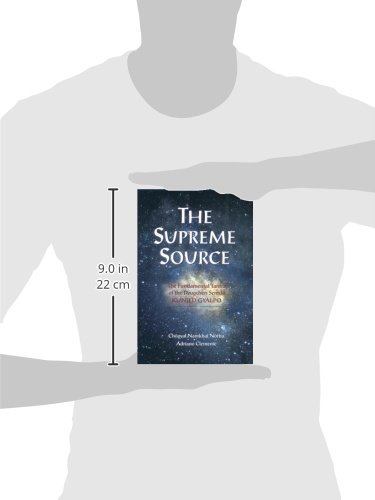



The Supreme Source: The Fundamental Tantra of Dzogchen Semde Kunjed Gyalpo
M**L
On the Apparent Existence of Emptiness or Something Else
The first 130 pages of this book contain a general introduction to the Dzogchen lineage and a synopsis of the tantra, given by Chogyal Namkhai Norbu. Readers who are familiar with the dative knowledge concerning Dzogchen will already be familiar with the references here; the various stories of the development of the Dzogchen lineage, its historic location and its iconography of mundane and magical events.The translation of the tantra itself is the remaining 100 pages. This is not the whole Sanskrit tantra, but as such compilations are often repetitive, I trust that what we are given is the most pertinent and most repeated – though the most awry divagations should also be illustrative and included.This tantra is often made reference to, and utilised, by lamas in the Dzogchen lineage. I recognise several chunks from the works of Longchen Rabjam, and it certainly enacts useful modes of understanding. However, in other ways it begs question.The tantra makes a lot of reference to ‘I’ – the impersonation that is the supreme source. Norbu encourages us, in his introduction, to read this as merely a device – no personality should be implied, no will or deliberately creative drive: the personification of the substrate of reality is merely an expedient means of communication:‘I, the supreme source, am the sole maker and no other agent exists in the world.’ [p137]So this is a tantra which, in a Buddhist reading, should not be read as exactly what is says, but requires interpretation. In a Hindu reading, the tantra would be accurate without interpretation.The words of the tantra also repeatedly insist on the presence of a fundamental substrate:‘This self-arising fundamental substance…’ [p138]‘As I am the substance whence everything arises…’ [p140]So this is a tantra which, in a Buddhist reading, should not be read as exactly what is says, but requires interpretation and circumspection. In a Hindu reading, the tantra would be accurate without interpretation.Many passages of The Supreme Source are similar to passages in the Upanishads or/and later Advaita Vedanta literature. Of course Buddhism and Hinduism have a common heritage and share many concerns: the manifestation of multiplicity from unity, there being no other-than, are two common themes focused on herein. These are the passages utilised by later lamas for, and amongst, their facilitation of the disclosure of the absence of any permanent entity.My classification of tantra is as an immediate disclosure of the nature of reality, the tantra indicating nothing other than what it says, the disclosure immediate and non-referential. The need, described by Namkhai Norbu, for circumspection with regard to what is apparently stated by this tantra does not conform to this criteria. This is a tantra which, in a Buddhist reading, should not be read as exactly what is says, but requires interpretation and circumspection. In a Hindu reading, the tantra would be an accurate disclosure without interpretation. Tantra being no other than their statements, I then prefer to read this as manifesting an experience of the substantial, non-different totality of the universal substrate, akin to Brahman.This tantra provides a good illustration of the question: What is the difference between moksha in the Hindu tradition and liberation in the Buddhist tradition? The answer to that might boil down solely to the imagined presence or absence of the person on one side, substantive existence on the other and whether or not these two are the same, within each tradition. There are Hindu experiences of non-duality that are constituted as their descriptions and there are Buddhist experiences equally constituted.
R**H
Persevere
Kingdom Kunjed Gyalpo or All Creating King (here rendered as Supreme Source) is an important Dzogchen Semde (mind series) tantra. At times the reading can be tough going, the text is deep and extremely repetitive, but that is the point! The use of repetition and the momentum of the text creates a mesmerising quality that left me buzzing.The one main drawback of this book concerns the double translation (from Tibetan to Italian to English). In a few instances, passages make no sense at all. But to be fair these are few and far between and do not detract from the overall meaning being conveyed. Also a glossary would have been most helpful as there are quite a number of technical terms and Tibetan phrases throughout the book.Allow yourself time to savour this work, persevere and read with care and you will be rewarded.
C**R
Beyond
Splendid
Trustpilot
2 days ago
1 month ago